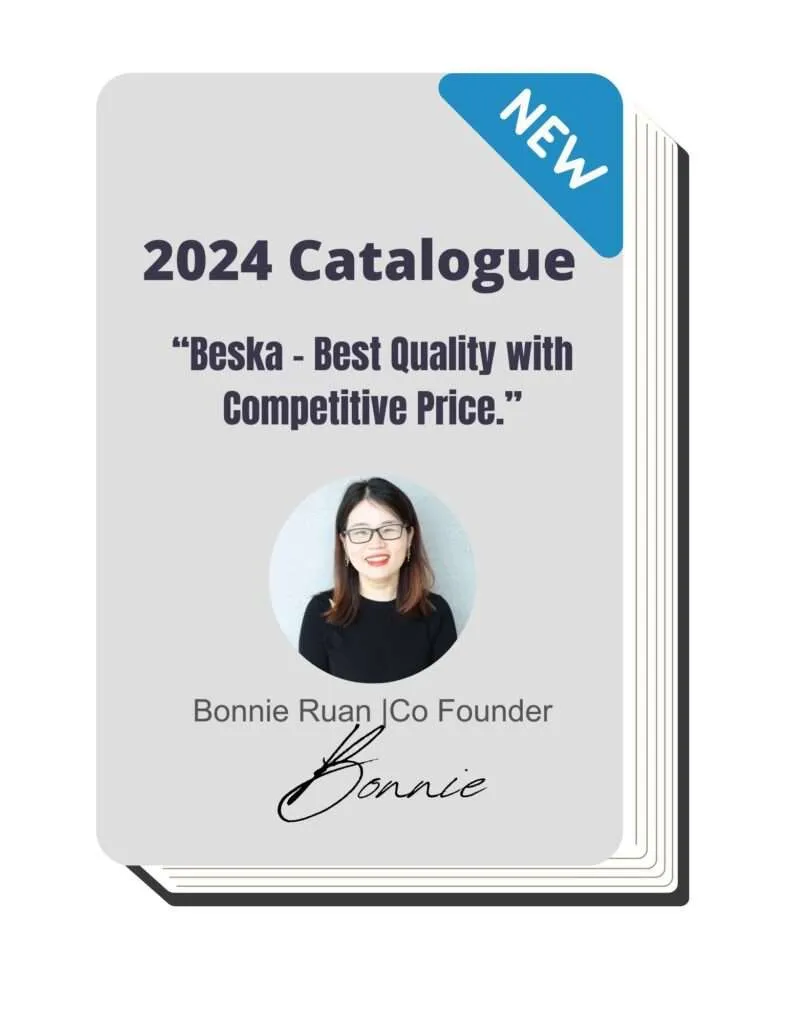Are you concerned about the longevity and resilience of your metal products? Alodine coating is a treatment that offers superior protection against corrosion and wear.
As expert in metal protection, I understand the challenges businesses face in maintaining the durability of their metal products.
Alodine coating is used to enhance the corrosion resistance of aluminum and other metals. It’s a cost-effective solution that also improves paint adhesion.
In this guide, we will delve into the science behind alodine coating and explore its various applications. You will also learn the key benefits it can give to your metal products.
So let’s get started!
1. What is Alodine Coating?
Alodine coating is a chemical process used primarily on aluminum and its alloys to protect against corrosion and enhance paint adhesion. The treatment works by applying a chemical conversion coating that creates a protective layer on the metal surface, making it more durable and resistant to environmental damage.
This type of coating is especially valuable in industries like aerospace and automotive, where long-lasting metal protection is crucial. But you know what else? Alodine not only extends the life of metal parts but also prepares surfaces for better paint finish, ensuring they look great and perform well for longer.

2. Benefits of Alodine Coating
Alodine coating offers numerous advantages for protecting metal surfaces. This makes it a popular choice across various industries. Here are the key advantages that make alodine coating a standout choice:
Enhanced Durability
Alodine coatings increase the lifespan of metal components by providing a strong barrier against corrosion and wear. This layer is integral to the metal, which means it won’t peel or flake off over time. Such durability is essential for components exposed to harsh environmental conditions. Ultimately, this means less maintenance and lower replacement costs for your business.
Improved Adhesion
One of the primary benefits of alodine coating is its ability to improve paint adhesion on metal surfaces. This is crucial for applications where a decorative or protective paint layer is needed. I finally understood that better adhesion leads to a more uniform paint finish and extends the life of the paint by preventing peeling.
Corrosion Resistance
Alodine coating provides excellent protection against environmental elements that can lead to corrosion and oxidation. This makes it an ideal choice for metals used in moisture-prone environments. The protective layer formed by the alodine process seals the metal from the 2 primary factors influencing corrosion which are air and moisture.
Electrical Conductivity
For industries that rely on electrical components, maintaining conductivity and rust resistance is important. Alodine coating achieves this balance perfectly. For example, it can be used to treat components like electrical enclosure and other conductive parts without compromising their functionality. This makes it invaluable for the electronics and automotive industries.

3. Types of Alodine Coatings
Alodine coatings come in different types designed to meet specific needs and applications. Understanding them can help you choose the best option for your metal protection requirements. Here are the most common types:
Alodine 1200
Alodine 1200 is a common type of coating that protects metal from rust and corrosion. What makes this so special? It creates a golden or clear layer of aluminum and other metals. This coating is often used on aircraft and car parts to keep them strong and long-lasting.
Alodine T 5900
Alodine T 5900 is an environmentally friendly option that doesn’t use toxic chemicals. It creates a clear protective layer on metals like aluminum, making them resistant to rust and wear. This coating is popular in industries that want to reduce their environmental impact while still protecting their products.
Alodine 600
Alodine 600 offers a clear and colorless finish that also protects metals from corrosion. It is less visible than Alodine 1200 but still provides a strong protective layer. This type is often used when the metal’s appearance is important like in electronic components.
4. Industries That Benefit from Alodine Coating
Alodine coating is used across many industries due to its excellent protective properties and cost-effectiveness. Various sectors rely on this coating to enhance the durability and longevity of their metal components. Here are the sectors that benefit the most:
Aerospace Industry
The aerospace industry relies heavily on alodine coatings to protect aircraft parts. According to Tech News and Updates, this sector is expected to reach a market value of $69,900 million by 2028, underscoring the growing demand for protective solutions. And alodine coatings play an essential role in this growth by preventing corrosion caused by moisture and environmental pollutants at high altitudes.
Automotive Sector
Alodine coatings are essential in this sector for protecting vehicle components exposed to road chemicals. These coatings are used from engine parts to door frames, enhancing their resistance to rust and extending their usable life. As cars are subject to diverse environmental conditions, alodine coatings certify they remain durable and visually appealing.
Electronics Manufacturing
Alodine coatings are invaluable in electronics manufacturing, particularly for enclosures and components that require excellent conductivity and corrosion resistance. The coating acts as a protective barrier that prevents oxidation without impeding electrical performance. And the best part is: this coating improves solderability, which is crucial for electronic assembly processes.

5. Alodine Coating vs. Other Protective Coatings
When it comes to protecting metal surfaces, various coating options are available. Making it important to understand how alodine coating compares to others. Here’s a detailed comparison between alodine coating and other coatings:
| Feature | Alodine Coating | Powder Coating | Anodizing | Galvanizing | E-Coating |
| Durability | Provides a durable layer that is integral to the metal, resistant to peeling and flaking. | Extremely durable with a thick layer that covers the entire surface, resistant to chipping and fading. | Has a hard surface that resists scratches and environmental wear. | Provides a strong layer that can withstand rough treatment. | Offers a durable finish that is uniform and seals the surface against corrosion. |
| Process Efficiency | Quick and efficient chemical treatment that does not require long curing times. | Requires baking in an oven, which can be time-consuming. | Time-consuming setup and process but results in a very hard, durable finish. | Quick process for hot-dip but requires precise temperature control. | Efficient once setup, but the initial application process can be time-consuming. |
| Aesthetic Flexibility | Available in clear or gold finishes that can enhance the natural look of the metal. | Available in a wide range of colors and finishes, including textures and gloss levels. | Offers a wide range of colors through dyeing the anodic layer, also provides a metallic sheen. | Typically results in a dull gray finish unless further treated or painted. | Offers limited color options but results in a smooth, uniform finish. |
| Application Process | Chemical treatment that is quick and effective without altering the dimensions of the part. | Requires a curing process that involves high temperatures, potentially altering the metal’s properties. | Electrochemical process that is costly than some other methods, but offers durable coverage. | Hot-dip or electroplating processes that are effective but can add significant weight to the treated parts. | Involves dipping the part in a paint bath followed by an electrical charge to adhere the paint. |
When selecting a protective coating, it’s essential to consider the needs of the application and the environment in which the component will operate. For applications requiring thicker protective layers, options like powder coating might be more suitable. But that’s not all, alodine coating offers superior corrosion resistance and electrical conductivity, making it ideal for various applications.
6. Maintenance and Care for Alodine Coated Surfaces
Proper maintenance and care are essential for ensuring the longevity and effectiveness of alodine coated surfaces. With the right practices, you can keep these surfaces in optimal condition for a longer time. Here’s how to maintain these surfaces:
Gentle Cleaning
Frequent gentle cleaning is crucial for maintaining alodine coated surfaces. Use a soft cloth or sponge with lukewarm water mixed with mild detergent to wipe the surface. This approach helps avoid scratching the coating while removing dust and other deposits. Make sure the surface is dried thoroughly with a clean towel to prevent water spots.
Damage Repair
If an alodine coated surface is scratched or chipped, it is essential to repair it quickly to prevent exposure to corrosion. Clean the damaged area with isopropyl alcohol and apply a matching alodine touch-up pen. Allow it to be cured as directed to guarantee the protective layer is restored. This prevents the metal underneath from corroding and extends the overall life of the coating.
Chemical Avoidance
It’s essential to avoid harsh chemicals when cleaning alodine coated surfaces. Chemicals like acetone, bleach, or ammonia can deteriorate the chromate conversion layer. So what’s the solution? Always opt for pH-neutral cleaning solutions designed for use on coated metals. This helps preserve the coating’s effectiveness in corrosion resistance and its physical appearance.
Protective Measures
Implement additional protective measures to extend the durability of alodine coatings, especially in harsh environments. For example, in marine settings, coated parts can be further protected with a clear sealant that adds an extra layer of resistance against saltwater. This helps maintain the functional and structural integrity of coated metal.
7. 3 Factors to Consider When Choosing Alodine Coating Services
Choosing the right alodine coating services is crucial for ensuring the best results for your metal parts. Several important factors can influence the quality and effectiveness of the coating. Here are the factors to think of:
#1 Holds MIL-DTL-5541 Standard
Choose an alodine coating service that holds MIL-DTL-5541 standards. This certification guarantees the coating meets military standards for corrosion resistance and electrical conductivity. It indicates that the service provider follows strict quality control procedures. Opting for a certified service guarantees that your parts will receive a high-quality, reliable coating.
#2 Coating Thickness Control
Evaluate the service’s ability to control and maintain precise coating thickness. Consistent coating thickness is critical for uniform performance and protection. Beska guarantees they use high-quality methods for measuring and ensuring accurate coating thickness. Proper thickness control certifies that your parts receive the correct level of protection without excess material use.
#3 Expertise in Non-Porous Chromate
Select a service with expertise in applying non-porous chromate coatings. Non-porous chromate provides superior corrosion resistance and durability. A service with this expertise can guarantee that the coating is applied evenly and effectively. Here’s why that’s important: this expertise is crucial for achieving a long-lasting and high-performing finish on your part.
Dive Deeper Into Our Resources
Looking for more diverse service options? Browse through our handpicked selections:
CNC Machining and Services
Surface Treatment and Metal Fabrication
Still haven’t found what you’re looking for? Don’t hesitate to contact us. We’re available around the clock to assist you.
Secure Your Products with Beska’s Premier Alodine Coatings
When it comes to protecting your business’s critical metal components, Beska’s alodine coating services stand out as a superior choice. Here’s why:
- Expert Application: We employ a team of seasoned professionals who bring precision to every alodine coating project. Our expertise ensures your components receive optimal protection against.
- Advanced Facilities: Our state-of-the-art coating facilities are equipped to handle complex projects with ease. Whether you need a small batch or large-scale production, we are equipped to deliver top-quality results consistently.
- Cost-Effective Solutions: We offer competitive pricing without compromising on quality, ensuring that you receive the best value for your investment. We work with you to find solutions that fit your budget.
Ready to enhance the durability and performance of your products? Contact us today to learn more about our alodine coating services and get a quote.





